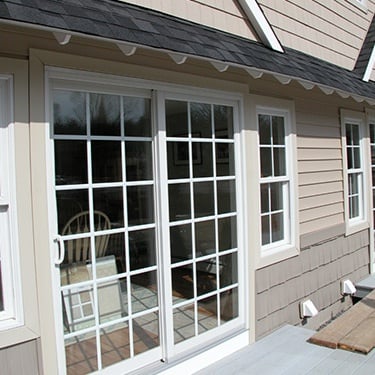
Signs It's Time for a Siding Makeover: 6 Ways to Know When Your Exterior Needs a Revamp
Your home's siding is more than just a protective shell; it's the first impression you make on the world. Over time, however, the wear and tear of the elements can take a toll on your siding, compromising both its aesthetic appeal and functional integrity. In this blog post, we'll explore six key signs that indicate it might be time to bid farewell to your current siding and usher in a fresh, revitalized exterior for your home.
1. Visible Damage:
The most obvious sign that your siding needs replacing is visible damage. Walk around your home and inspect the siding for any cracks, chips, or holes. Pay close attention to areas that are most exposed to the elements, such as the sides facing prevailing winds or areas that receive the most sunlight. Over time, exposure to sun, rain, wind, and other environmental factors can cause your siding to break down. If you notice significant damage, it's a clear indication that your siding has reached the end of its lifespan.
Additionally, look out for signs of rot or warping, especially in wooden siding. Rot can compromise the structural integrity of your siding and create an environment conducive to pests. If your siding is showing these signs, it's time to consider a replacement.
2. Fading Colors:
Your siding is not only a protector but also a canvas that contributes to your home's curb appeal. Fading colors can make your home look tired and outdated. If you've noticed a significant loss of vibrancy in your siding, it might be time for a refresh. UV rays from the sun can cause colors to fade over time, and while this doesn't necessarily impact the structural integrity of the siding, it does affect the overall appearance of your home.
Modern siding materials often come with advanced color retention technologies, ensuring your home maintains its aesthetic appeal for years to come. Consider upgrading to new siding materials that offer enhanced UV resistance and color longevity.
3. Increased Energy Bills:
Your siding plays a crucial role in insulating your home. If you've noticed a spike in your energy bills, it could be a sign that your siding is no longer providing effective insulation. Over time, siding can develop gaps, and cracks, or become less tightly sealed, allowing air to escape and making it harder to regulate the temperature inside your home.
Newer siding materials often come with improved insulation properties, helping you maintain a comfortable indoor environment while reducing your energy consumption. Investing in energy-efficient siding not only enhances your home's comfort but also contributes to long-term cost savings.
4. Mold or Mildew Growth:
Moisture retention is a common issue with aging siding, especially in areas with high humidity or frequent rain. If you notice the growth of mold or mildew on your siding, it's a sign that moisture is being trapped, creating an environment conducive to these unwelcome guests.
Mold and mildew not only compromise the appearance of your home but can also pose health risks to you and your family. If your siding is battling a persistent mold or mildew problem, replacing it with moisture-resistant materials can help prevent these issues in the future.
5. Loose or Missing Panels:
Loose or missing siding panels are a red flag that should not be ignored. Whether due to harsh weather conditions, improper installation, or simply the aging process, loose or missing panels can expose your home to the elements, leaving it vulnerable to water damage, pests, and more.
Regularly check your siding for any signs of panels that have come loose or gone missing. If the damage is extensive, replacing the entire siding might be a more cost-effective solution than trying to repair individual panels. Upgrading to a more durable and secure siding material can also provide long-term protection against such issues.
6. Outdated Style:
Just as fashion trends evolve, so do architectural and design preferences. If your home's siding reflects a style that was popular decades ago but no longer resonates with contemporary aesthetics, it might be time for an update. A modern, stylish exterior not only enhances your home's curb appeal but also increases its market value.
Explore newer siding options that not only align with your personal style but also offer improved durability and functionality. From sleek and minimalist designs to traditional and rustic finishes, there's a wide range of siding materials that cater to various preferences.
Give your Siding a Makeover
Your home's siding is a vital component that deserves attention and care. By being proactive and recognizing the signs that indicate it's time for a replacement, you can protect your home, enhance its curb appeal, and ensure it remains a comfortable and secure haven for years to come. If you've identified multiple signs from the list above, it might be the perfect time to consult with a professional and embark on the journey of transforming your home's exterior. After all, a fresh coat of siding is not just a practical investment but a stylish statement that speaks volumes about your home's character and your commitment to its well-being.